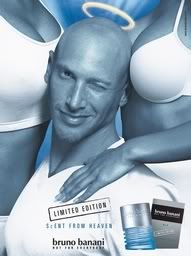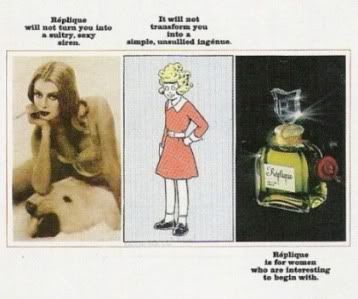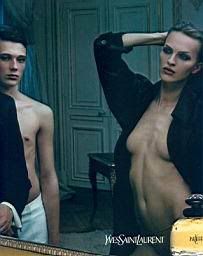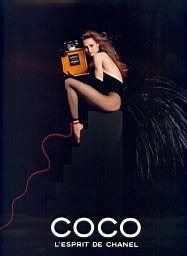First of all, we've seen perfumers talk before in press clips, but never before, if memory serves me right, in such a scale. This is a mega production that uses a whole panoply of cues: the materials of the fragrance, the link between scent and memory, director shots of parts of the commercial we might never see in the cinema and online, and a...voice over.
Francois Demachy, the Dior perfumer behind this creation, is given the veneer of an American movie-goer's memory of a memory: of the voice overs of movies to follow, of trailers. In constant anticipation of what will follow, not what is in front of you. Trailers have this paradox into them, you see. Watching a trailer, especially nowadays, is like having seen the movie, or at the very least the very best parts of the movie. It aims to catch your attention, to make you exclaim "wow, that looks like an excellent movie" and make you seek it out and pay the ticket to watch it in full, but at the same time it also leaves you with the partial satiation of having actually experienced the movie (at least they do to me). Possibly this commercial clip is doing the same for the fragrance. In constant anticipation for the smell to come it sort of gives away the clues into what it smells like. It delivers before it actually hits the nostrils. Maybe I'm too critical, that could be. Maybe I prefer a little bit of mystery.
The other thing is that this clip, and the official commercial as well, tries to sell very American things to -I suppose predominantly- Americans. Which is funny, if you think about it, since Christian Dior is one of the Frenchiest brands and the official commercial is directed by that most French of French directors, Jean Baptiste Mondino, responsible for some of the most iconic images in advertising ever.
The semiotics reads like a lexicon of symbols: The desert, the wide open space, the open road, the deserted fairgrounds, the light that glimmers at the end of the road, both an effect of heat and distance and the cinematic familiarity of the camera lens showing you the experience instead of you actually experiencing it. Laundromats and wild horses, and most of all heavy Mustangs or similar cars traveling outside the urban landscape. Francois Demachy the perfumer stands atop the skyscraper of offices and dreams of the anticipation of open space, or the memory of it, it is not clear. Johnny Depp on the other hand buries his past in the dirt of the desert to divest himself of memory.
In the end, Sauvage stands as an invitation to fondly recall what we already know (the images and the ingredients of the perfumes, even those openly admitted to be synthesized, which is a nice touch) or to explore something that lies ahead and we don't? It all depends on the audience that views it, their experiences, their associations, their familiarity with what is being shown.
What do you think?
.jpg)











.jpg)














